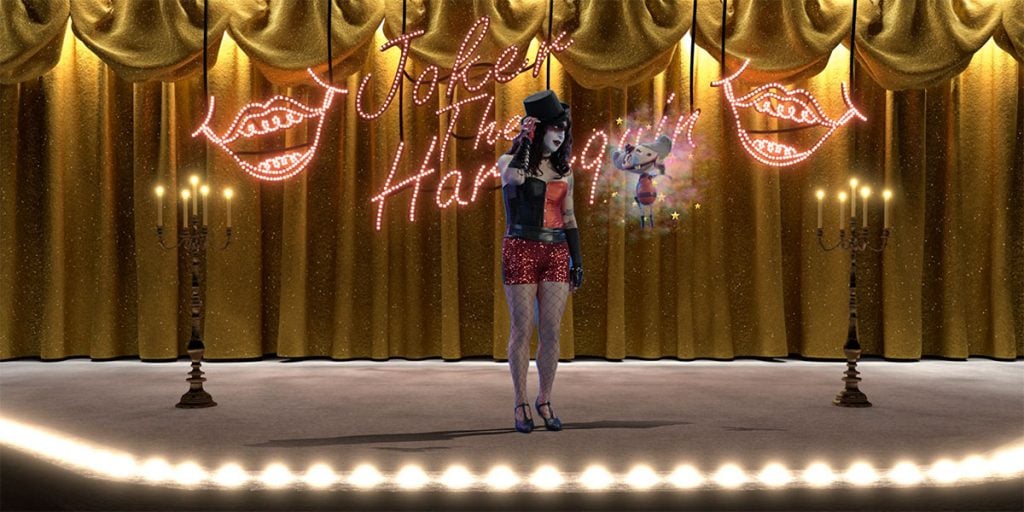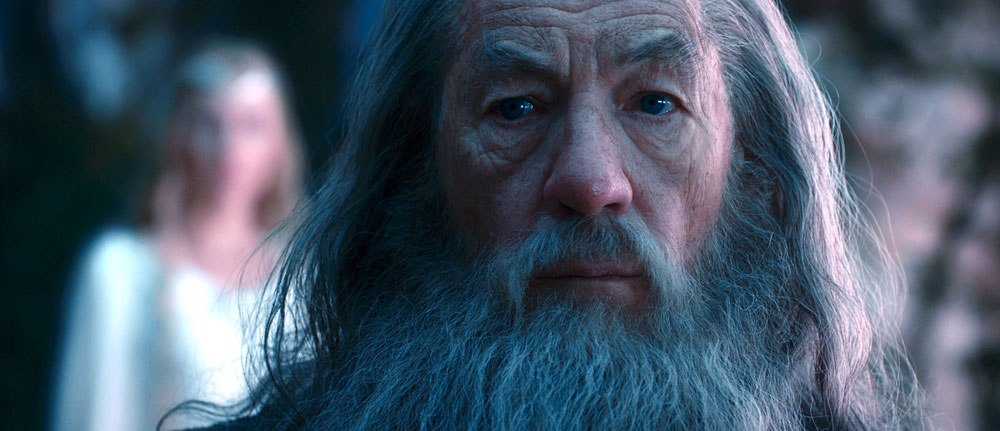Have you ever wondered what your rights are as an artist? There’s no clear-cut textbook to consult—but we’re here to help. Katarina Feder, a vice president at Artists Rights Society, is answering questions of all sorts about what kind of control artists have—and don’t have—over their work.
Do you have a query of your own? Email [email protected] and it may get answered in an upcoming article.
I’m an artist fascinated by the potential of DALL-E and other AI-generated art programs. Before I dip my toe into them, I was curious about them from a copyright perspective. I’m clear that you can’t copyright a work by an AI but what if, despite my best intentions, the program ends up making Shrek? I don’t want Dreamworks to sue me
Artificial intelligence text-to-image programs represent a bold new frontier in art creation. For those who aren’t aware, the code involved allows users to type in a prompt—say, “Nosferatu on Rupaul’s Drag Race“—and then watch as the program manages to produce a series of images that fit the description eerily well, after it scours the internet for source material. DALL-E is the highest profile program, and takes its name from the Pixar robot character and, of course, Salvador Dalí, though I see this whole endeavor as more reminiscent of the work of Darren Bader, or perhaps the dearly departed Lawrence Weiner, who spent his career writing such prompts on walls.
Your question is far from the only moral question surrounding the technology, which has been used to create pornographic images of celebrities, for example. When it comes to copyright, Shrek is the least of our concerns. As this article at The Verge points out, these types of programs are already adept at mimicking the styles of artists.
If you click through, you’ll see samples of A.I.-created works in the style of Pablo Picasso, Claude Monet and Kentaro Miura. Nobody would mistake them for the real thing at this point, but the technology is only going to improve, and one has to wonder what this might do to the market for younger artists. Do you like Christina Quarles but find her work expensive and lacking in kittens? Why not just replicate her style, with your chosen subject matter, and photo print “your” creation for your wall?
But let’s get Shrek out of the way. As addressed in other iterations of this column, there are few commercial intellectual properties that cannot be appropriated by artists. A painting of Shrek serves a different purpose than the movie, does not affect the market for the movie or its official merchandise, and is likely less about Shrek and more about themes unrelated to the movie (Hollywood’s colonization of all culture, body dysmorphia, the enduring appeal of Mike Myers, etcetera). Andy Warhol did Superman, you can do Shrek, no problem.
I think the greater danger is using the program to mix Kenny Scharf with Luc Tuymans, and then think that you’ve created something original. Even if you get the Minions in the mix, the end result is going to feel derivative if only in a subtle, uncanny way.
My advice to you would be to use these kinds of programs like a studio assistant with really good ideas. Let them pitch you on a bunch of compelling concepts and sketch out what they might look like if you were to execute them with your own hand. There’s no substitute for the real thing.

A promotional image for The People’s Joker, by Vera Drew.
I’m a filmmaker who’s been disturbed about the studio response to a movie that premiered at the Toronto Film Festival called The People’s Joker. Seems like a pretty clear cut parody to me, and you’re always saying that parody is highly protected. How was Hollywood able to shut this down?
I must admit, I was not aware of this movie. I am hardly aware of the comic book movies for which I have seen trailers. I am only slightly more aware of comic book movies I have seen on airplanes. Suffice it to say, the “unauthorized take on an iconic comic-book villain” was not on my radar, even if it was “the Toronto International Film Festival’s hottest movie.”
The crowd-funded film, billed as “a trans coming-of-age story”, was directed by Vera Drew, who is herself trans. According to Variety: “The irreverent underground project reimagines the Joker’s origin story as a queer coming-of-age/coming-to-terms narrative, using a mishmash of styles: mostly crude live-action of the kind you expect from public-access programming (shot against greenscreens, then composited with rudimentary CG sets), embellished with various forms of homemade animation.”
It sounds like a wild ride! But, as was the case when Richard Prince slapped his own name over the notoriously litigious author’s name on Catcher in the Rye, it also sounds like Drew was kind of courting this controversy for publicity purposes. The movie’s trailer describes it as “an illegal comic book movie” but Polygon quotes Drew as saying: “This movie is not illegal. I just said that to get you to come.”
I agree with Drew and the questioner that the movie should probably be protected speech. If claims of parody are good enough to ensure DC/Warner Brothers hasn’t hassled the creators of however many “XXX Batman Porn Parodies,” it should be good enough to protect this movie as well. It has the same non-effect on the market for authentic DC movies, and real ideas to promote.
I’m not sure I’d say that this cease and desist proves that “copyright is broken,” as one writer said, since a cease and desist does not represent legal precedent. If Drew took this to court, it’s possible she’d win.
And if I had to look at it from Warner Brothers’ point of view, I’ll say that the most protected parody tends to comment on the original material. The makers of Dragnet couldn’t sue the makers of Police Squad!, because it was mostly about silly and formulaic police procedurals like Dragnet are. Indiewire writes: “Though the film is steeped in the iconography of DC Comics characters like Batman, Penguin, and Joker, The People’s Joker takes more shots at Saturday Night Live and Lorne Michaels than it does at the Batverse.”
So that may have been a factor in the sending of the cease and desist. That said, I’m with the questioner on this one. I think this speech should be protected.

A newspaper illustration of McGurk’s Suicide Hall.
I’m a painter who just finished reading Lucy Sante’s fascinating Low Life and wanted to paint some particularly fascinating scenes from it. Do I have to obtain her permission first?
Ah what a book. Who couldn’t read it without a desire to go paint a scene in McGurk’s Suicide Hall?
You should be fine to do what you wish here. Speaking broadly, facts cannot be copyrighted. They lack an author, and therefore belong to all of us. You may recall that the artist Shepard Fairey was sued for his Barack Obama “HOPE” poster but that was because he based that on a photograph for which someone else owned the copyright. You can paint the first moon landing with confidence, and even use the famous photographs since they belong to the government and are therefore public domain.
This issue recently arose in another artistic medium famous for its love of facts: Podcasting. Yes, Robert Downey Jr. and his Team Downey production company were sued by lawyer and investigative journalist Paul Morantz, who claimed that their new podcast, “The Sunshine Place,” borrows heavily from his book Synanon: From Miracle to Madness. The lawsuit alleges that Team Downey decided the world needed another podcast about cults and reached out to Morantz for a digital copy of his book on Synanon, the 1970s drug rehab center that eventually became rather murdery. He sent them his two books on the subject and asked that they not use any of his material without his permission. It seems the podcast crew took this alleged condition as more of a suggestion.
I have a great deal of sympathy for Mortantz. At 77, he has described himself as “very ill” and for this reason has added “elder abuse” to the accusations in his lawsuit. Moreover, nonfiction books are presumably very hard to write and research. You spend years of your life on a project like this and then Iron Man swoops in, adapts it, and it shoots right to the top of the charts? Morantz must feel frustrated, this is his story. I mean, members of Synanon tried to kill him with a rattlesnake!
But for a podcast worthy twist, the show’s narrator is Sari Crawford, daughter of the cult’s former leader. Isn’t this her story as much as it is Morantz’s? Alas, none of us can claim ownership over reality.
You’re right to ask this question, because Sante can conjure vivid scenes that don’t feel like you’re creating them in your head. But, at least from a legal standpoint, you are! It is only her language and presentation of them that is protected, not the content. You can paint every scene in her book if you please, provided you’ve stocked up on red.

Gandalf the Grey would not approve.
I happened to be browsing Apple’s website for a new laptop the other day and this line advertising security jumped out at me: “Keep it secret. Keep it safe.” As a longtime Lord of the Rings fan, this seems like an obvious rip off of Gandalf’s famous line when he gives Frodo the ring. Are screenplays copyrighted? Can anyone use a famous line like this for promotional purposes or otherwise? I would imagine that when an artwork or image is used in an ad, the artist must be compensated. Is the same not true for text?
In looking at the page on Apple’s website that you mention, the phrase really does stand out. None of the other short descriptors make any kind of cheeky pop cultural reference, which causes the LOTR allusion to be even more glaring by contrast. Let’s also remember that this line is said by Gandalf, and I have a hard time seeing a wizard of Middle Earth, deeply in tune with natural forces, giving his blessing to 21st-century encryption technologies.
As to your first question, yes screenplays are certainly copyrighted. As are books, if you’re curious, because that’s where this line originates. While such protection necessitates that one receives permission before publicly performing or publishing that same script, it does not mean that any phrase or string of words from the script cannot be used in other capacities.
Think about it this way: if copyright protection of a screenplay extended to every combination of words, the most simple and common phrases—such as “Let’s go!” or “My name is”—would be prosecutable when used for commercial purposes in another context. This would inhibit creativity, which is the very thing copyright laws are meant to encourage. So, Gandalf’s opinion aside, copyright law says that “words and short phrases such as names, titles and slogans” are not subject to copyright.
But regardless of this stipulation, there is still plenty of litigation regarding literary phrases, and it necessitates that several factors need to be taken into consideration when determining if the use of a phrase from another work counts as infringement. When comparing two works to assert that one inappropriately copied from the other, you have to understand that “if the works in question are dissimilar, the use of an identical phrase is not enough to rise of a finding of substantial similarity,” meaning there can be similarities without infringement. I think we can all agree that the LOTR screenplay and Apple’s website have nothing in common other than this one phrase.
Most importantly, the protection of a literary phrase is “dependent upon the way in which both plaintiff and defendant use words… and [the plaintiff] must demonstrate that the phrase, or the way that the phrase is used, is so unique to justify protection.”
However! Apple is in dicey territory here because this is marketing material. I feel like I’m always telling people that they can borrow pretty much anything in the name of art, and while that’s true, this isn’t art. It’s commerce. In 1982, Samsonite made an advertisement that showed Harrison Ford racing through a jungle with some luggage to prove how durable it is. They were eventually able to come to a settlement with the makers of the Raiders of the Lost Ark. In 1979, a court ruled against Crazy Eddie, even though his Superman parody ad didn’t say the superhero’s name, because while that TV spot featured Crazy Eddie in the sky, people on the ground initially mistook him for a bird, or a plane…
And when artists’ work appears in an ad, you’d better believe they’re compensated. Negotiating such deals is a big part of what we do at Artist Rights Society.
So, while the use of any stills or clips from a movie must be cleared when used by an external party in a profit-seeking manner, text is much more of a (Gandalf the) gray area. I really don’t know why Apple would risk an infringement here. Maybe they’re jealous that Amazon snapped up all the good nerdy IP with the J.R.R. Tolkien estate, while they were left with Isaac Asimov.










